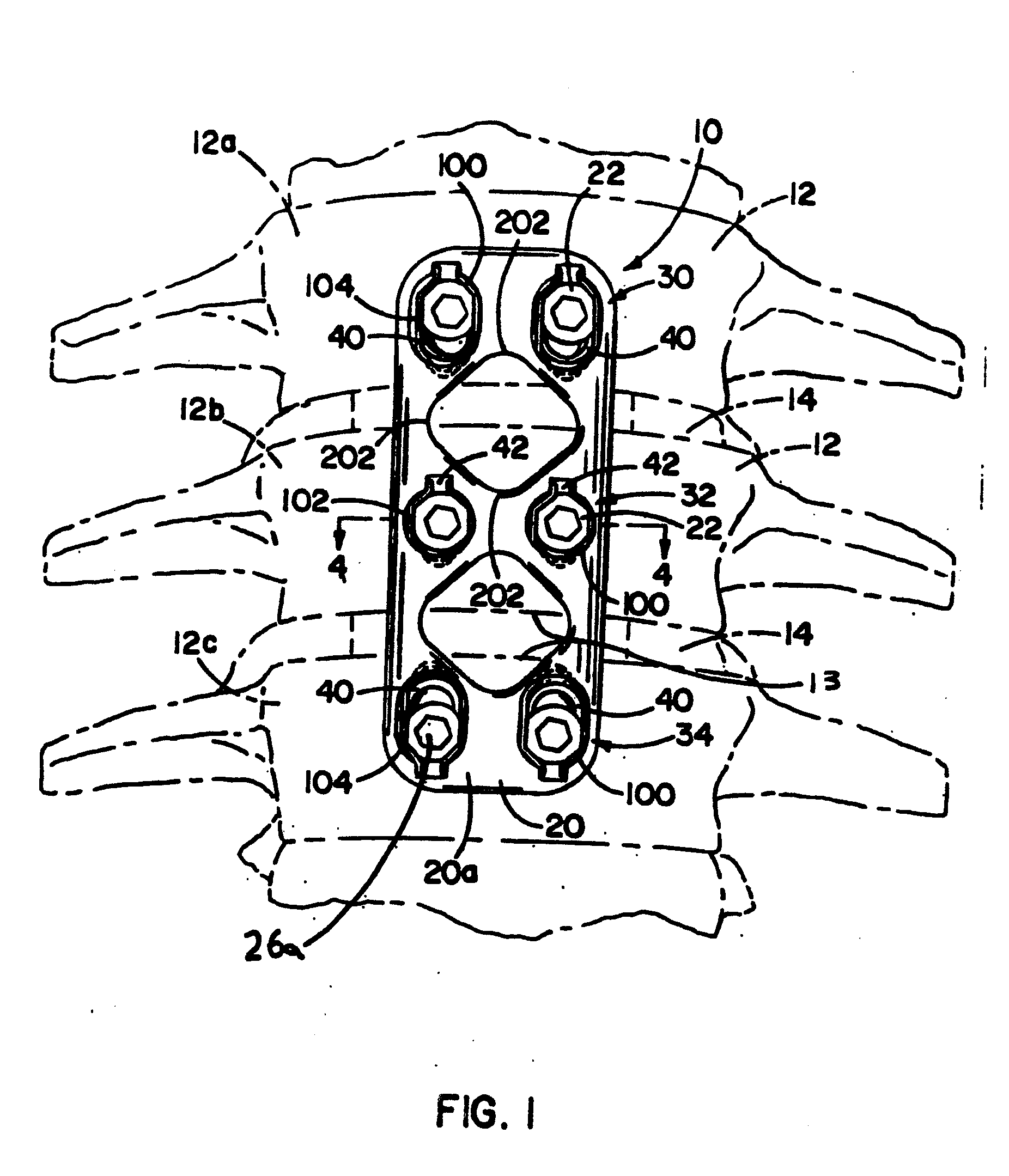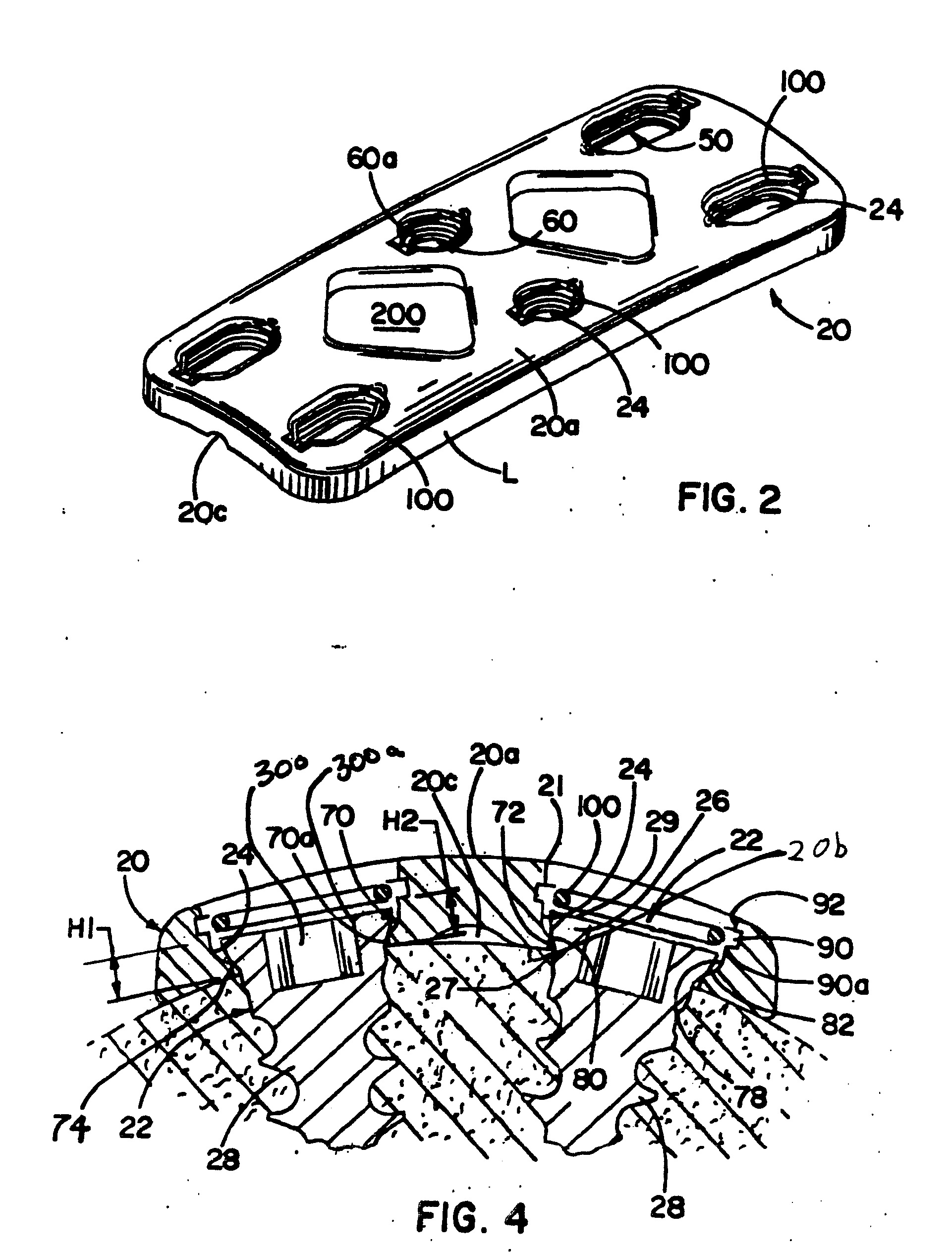Bone plate system and methods
a plate system and bone plate technology, applied in the field of bone plate systems, can solve the problems of compromising the ability to achieve optimal bone fusion, affecting the fusion process, so as to minimize undesirable plate movement, maximize coverage, and minimize the effect of bone plate movemen
- Summary
- Abstract
- Description
- Claims
- Application Information
AI Technical Summary
Benefits of technology
Problems solved by technology
Method used
Image
Examples
Embodiment Construction
)
[0143] Referring to the FIGURES, exemplary bone plate systems for securing a plurality of bones 12 in a desired orientation or arrangement are illustrated including features in accordance with the present invention. In some forms, the bone plate system is a dynamized plate, or has at least one set of dynamic holes, so that bones 12 may compress and shift toward each other, such as the bone plate system 10 depicted in FIG. 1. In other forms, such as exemplified in FIG. 28, a bone plate system 700 is illustrated as non-dynamized. It should be noted that a bone plate system may be provided including a bone plate where each bore thereof is dynamic, as is described herein, or non-dynamic, also described herein. In addition, a dynamized bone plate may utilize a combination of dynamic and non-dynamic bores.
[0144] Referring now to FIG. 1, the bone plate system 10 assists in the healing and repair of damaged, fractured, or broken bones 12. In the illustration of FIG. 1, the bones 12 are ad...
PUM
 Login to View More
Login to View More Abstract
Description
Claims
Application Information
 Login to View More
Login to View More - R&D
- Intellectual Property
- Life Sciences
- Materials
- Tech Scout
- Unparalleled Data Quality
- Higher Quality Content
- 60% Fewer Hallucinations
Browse by: Latest US Patents, China's latest patents, Technical Efficacy Thesaurus, Application Domain, Technology Topic, Popular Technical Reports.
© 2025 PatSnap. All rights reserved.Legal|Privacy policy|Modern Slavery Act Transparency Statement|Sitemap|About US| Contact US: help@patsnap.com



